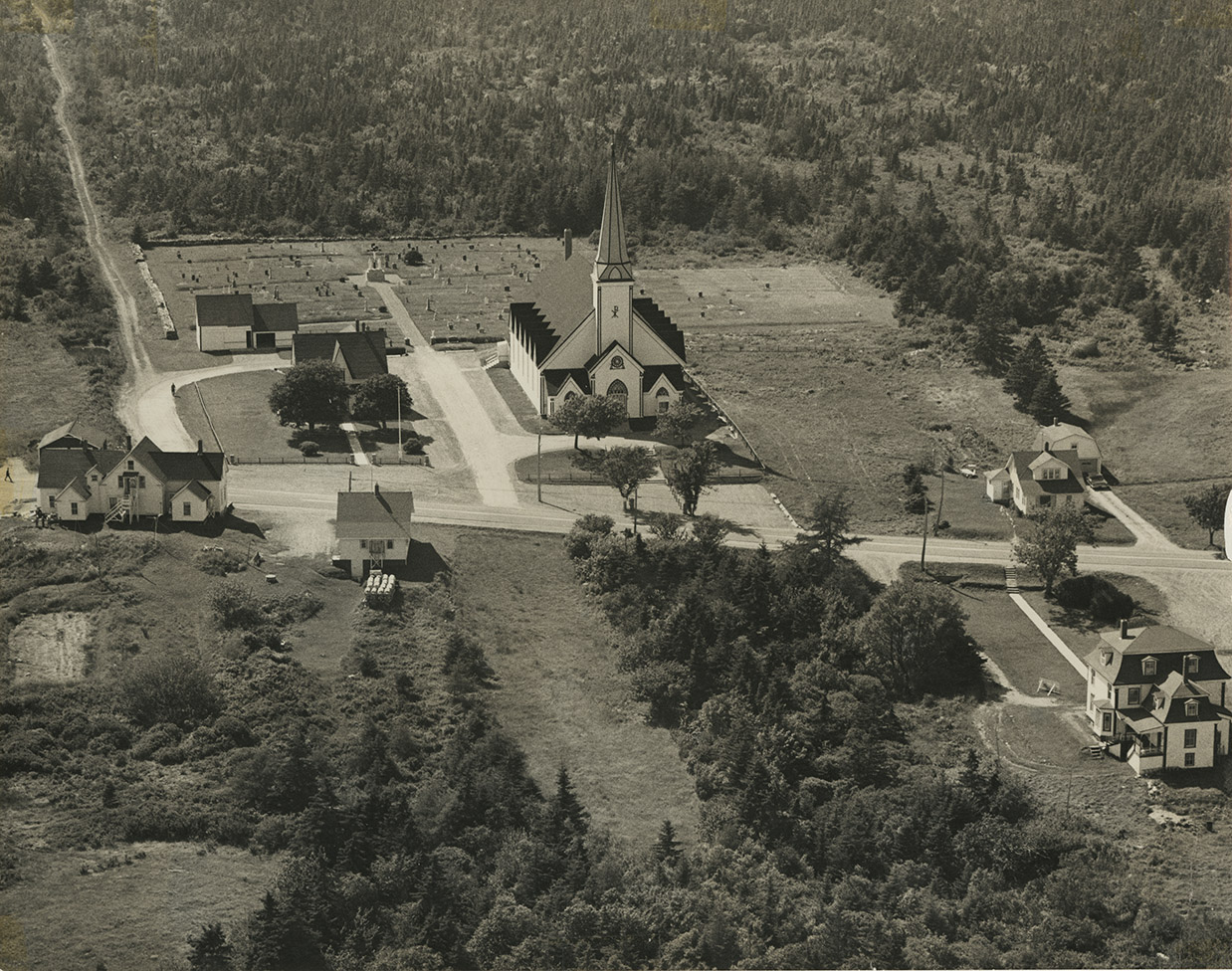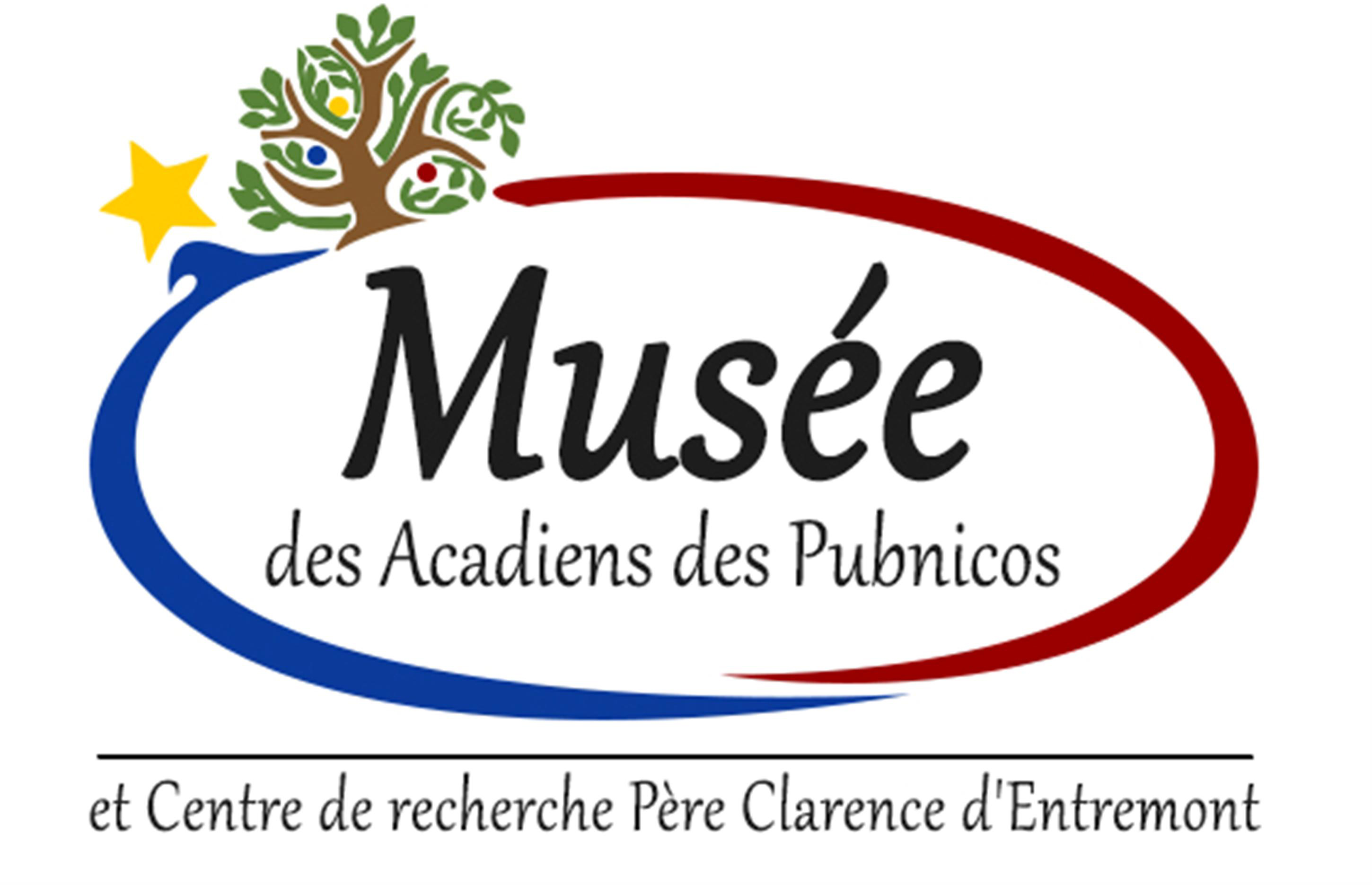Council of Nova Scotia Archives
Musée des Acadiens des Pubnicos et Centre de recherche
Aerial View of Saint Peter's Church, Middle West Pubnico and surrounding area
Saint-Pierre Church was built from 1890 to 1892 under the direction of Louis P. LeBlanc and the architect, Joseph B. Spinney. The parish bought the land for the church from Nicholas d’Entremont for $160.00. The church was the third one built in the village. The first mass held was Midnight Mass at Christmas in 1891, which was conducted by Father Sullivan. The total cost of the church was $12,000. The chapel was built in 1928, when Father Denis Comeau was priest. The church is now known as a spiritual home where many generations have come, and still come, to practise the Catholic faith.
Around 1950, Anne d’Entremont organized a campaign to collect money to buy a Cavalry, which was placed halfway down the road, in the middle of the cemetery. In 1971, it was moved to the end of the cemetery, next to the stone wall.
The last person buried in the old cemetery was Marie-Jeanne d’Entremont, in 1891. The first person buried in Saint-Pierre cemetery was Actime d’Entremont, who was buried on October 28th, 1892. Actime d’Entremont’s tombstone cannot be found in the cemetery.
Unfortunately, many of the old tombstones have dates that do not match up with Nova Scotia records and information from censuses. It is sometimes difficult to determine which is the correct date.
As for the second cemetery in West Pubnico, now known as the “Old Cemetery,” it was located on the same plot of land as the new church. All of the people buried there did not have tombstones – the oldest tombstones that can be found there are from 1854. It is possible that the dead continued to be buried in the first cemetery, which was to the east, for some time, and perhaps also behind the first church. Unfortunately, when this cemetery was leveled during the time of Monseigneur Thomas LeBlanc, all of the tombstones were removed, then placed again haphazardly, in such a way that none of them are situated where the person whose name is inscribed on the stone is buried. What is more appalling is that a husband’s stone can be at one end of the cemetery, while his wife’s stone is at the other.
Father Clarence J. d’Entremont, from the book Histoire Religieuse de Pubnico.
Reference: Musée des Acadiens des Pubnicos 2005.42-P88
For more information, please contact the Musée des Acadiens des Pubnicos.


